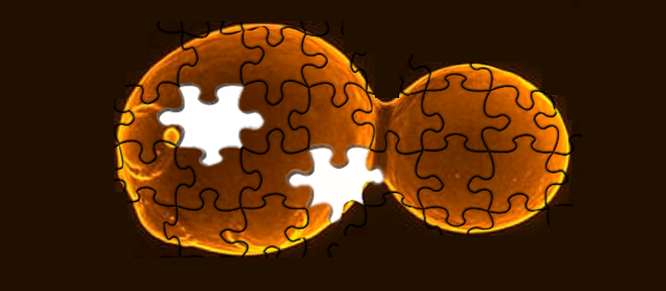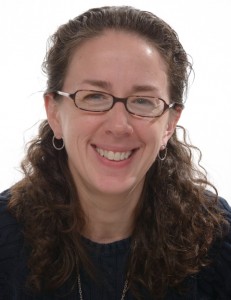While the science behind the synthetic yeast genome project is cutting edge, the ethical questions surrounding it aren’t new.
The scientists of the Sc2.0 project have a goal that sounds akin to science fiction – they’re working toward building a completely synthetic yeast genome. This new strain of Saccharomyces cerevisiae, affectionately named Sc2.0, will be used to study fundamental properties of chromosomes, genome organization, gene content, function of RNA splicing, the extent to which small RNAs play a role in yeast biology, the distinction between prokaryotes and eukaryotes, and questions relating to genome structure and evolution. In addition to the hard science, the project faces a series of challenges in setting ethical boundaries, educating policy makers and the public, and building a governance plan.
Genes to Genomes spoke with Debra J. H. Mathews, PhD, MA, a geneticist and ethicist at the Johns Hopkins Berman Institute of Bioethics. She played an important role in developing the Sc2.0 Statement of Ethics and Governance published in August in GENETICS. We asked about her views on the education, governance, and scientific goals of the project. She asserts that the ethical questions facing synthetic biology scientists are not new issues; they’re new combinations of existing questions.
Genes to Genomes: What is your role in the Sc2.0 project?
Debra Mathews: I’m a geneticist by training, and I do ethics and science policy research now. My role on the project is as an ethics person.
I worked on developing the statement of principles with a terrific graduate student, Anna Sliva, and in the current phase of the project, I’m working on developing a massive open online course (MOOC) on ethics and policy in biology. Colleagues of mine who collaborate on the project are putting together workshops on ethics and policy related to synthetic biology and the yeast project.
G2G: What, in your mind, are the most important goals for educating the public on the Sc2.0 project?
DM: I tend to think more about what are the conversations we can have with the public rather than what we can tell them. I think transparency is critically important. We need to be out there talking about work in language that normal people can understand – translating jargon into words everyone knows.
I think having conversations with the public is critically important. It shouldn’t be a one-way street. We need to hear from them; what they’re thinking about, what they want science to do, what risks and benefits interest them.
G2G: What would your ideal role of government oversight for synthetic DNA work be?
DM: There are lots of kinds of governance that aren’t government; governance of science isn’t necessarily driven by government regulation.
Synthetic biology is really interesting because it is so diverse. I don’t think Sc2.0 is working towards a governance model per se. I think that’s something many people in the field are thinking about, but it’s not something any individual project can take on. With any very new area of science not captured by existing oversight mechanisms, we have to figure it out. This is another case where we have to figure it out, like we did in the 1970s with Asilomar*.
It’s highly unlikely that that we get to a place where there’s one committee or agency in charge of synthetic biology. It’s more likely to be a complicated and complementary set of governance approaches with government, professional societies, and institutions all working together.
G2G: What are your most exciting goals for synthetic biology?
DM: I think the vast majority of the benefits are going to be basic science benefits. It’s going to dramatically improve our understanding of how simple organisms and gene networks work. That will help us answer other questions. Those are the things I’m more interested in; it’s that on-the-ground work, paying dividends now, furthering basic science now. It’s the small day-to-day work that’ll eventually help us address the bigger things like disease and the environment.
G2G: So it’s more a part of the ongoing conversation with the public about the importance of investing time and effort into basic science research?
DM: It’s absolutely part of that conversation, and it’s a conversation we tend to have very poorly. A more important conversation is “this is how science works.” Science is incremental; it’s slow. We occasionally have leaps, but it takes time because we’re learning. Every time we do an experiment, we’re learning, and we build and build and build. Eventually we get to a result that everyone can see is worthwhile.
It’s hard to have the “how science works” conversation with the public in a way that isn’t deadly boring. I don’t understand why that’s the case. If you get any scientist talking about their science, they get so excited and into it and passionate. Somehow we’re not able to translate that excitement into a conversation with the public. We need a Neil deGrasse Tyson for biology!
*The Asilomar Conference on Recombinant DNA was organized by Paul Berg in 1975. Scientists came together to discuss the progress and potential biohazards of emerging recombinant DNA work.
CITATIONS
Berg, P., Baltimore, D., Brenner, S., Roblin, R.O. III, Singer, M.F. 1975. Summary Statement of the Asilomar Conference on Recombinant DNA Molecules. PNAS, 72(6): 1981-4. http://www.pnas.org/content/72/6/1981.full.pdf
Silva, A., Yang, H., Boeke, J.D., Mathews, D.J.H. 2015. Freedom and Responsibility in Synthetic Genomics: The Synthetic Yeast Project. Genetics, 200(4): 1021-8. doi:10.1534/genetics.115.176370 http://www.genetics.org/content/200/4/1021.full
































